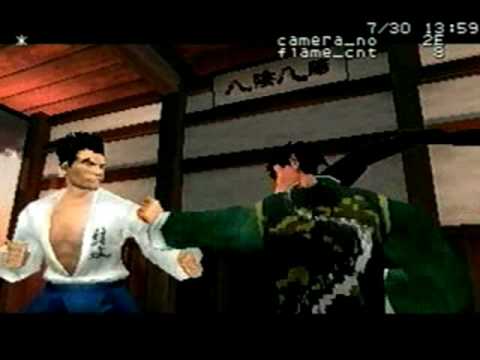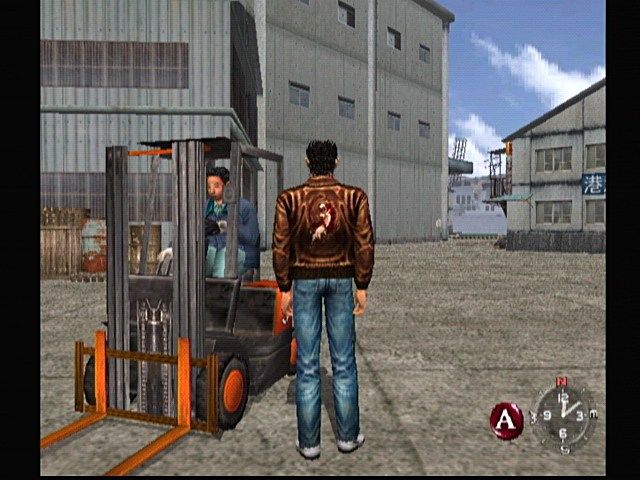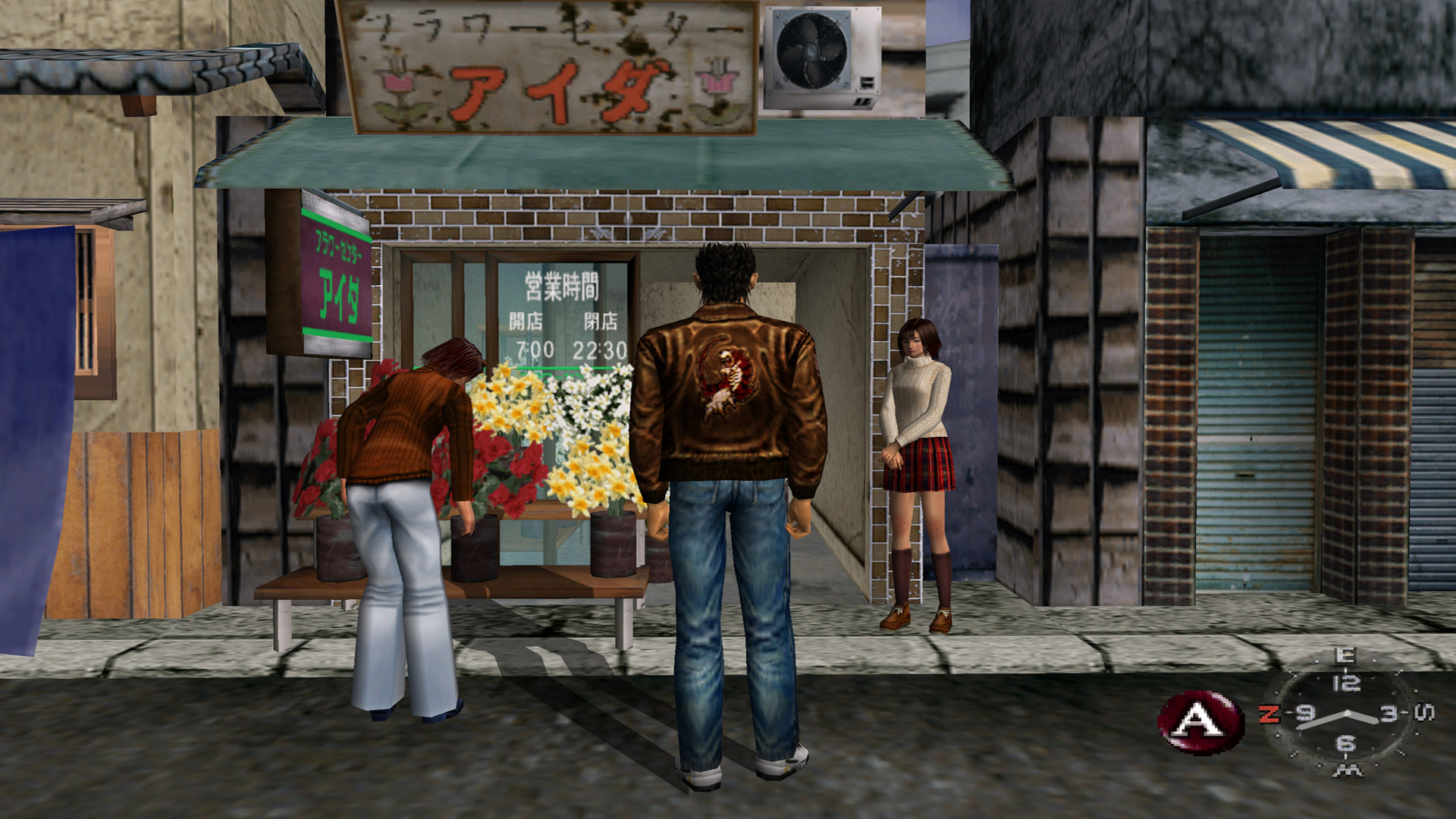For all intents and purposes, Shenmue was billed as the game to save the Dreamcast. Shenmue was meant to be an ambitious multi-chapter saga set in an open world environment.
According to multiple sources Shenmue and Final Fantasy VII hold the records for the most expensive games made in the 1990s. It is hard to say which game cost more, as development budgets were often clustered together with marketing budgets.
Either way with a rumored 40-70 million budget and Sega’s downright terrible financial situation, Yu Suzuki’s Shenmue was the Dreamcast’s make or break title.
It All Started as Sega Saturn Game

Shenmue started out as a Sega Saturn ‘Virtual Fighter’ themed Role-Playing game featuring Akira, called Virtual Fighter RPG: Akira’s Story. The Sega Saturn, being underpowered and on its last commercial legs would not provide the game with the best chance to succeed. Thus, Yu Suzuki and AM2 were forced to move the project to the (then) upcoming Sega Dreamcast hardware in 1997.
Yu Suzuki best explained the move in a 2014 interview now available on Segaretro.org:
“Dreamcast Hardware was way more powerful than what Sega Saturn could provide. In fact, the game had a better quality on it. And I think that moving the project to the Sega Dreamcast was a great idea because the Sega Saturn, at the time, had reached its limits.”
In the project’s move to the DC the Virtual Fighter theme was ditched, and Shenmue was born as its own separate Sega franchise.
Shenmue Was All About the Details Not Enough About the Fun
Shenmue was one of the most powerful reasons for why I bought a Dreamcast (with some assistance from my mother) back when I was teen. But the fact of the matter is that while it was a gorgeous game, and stunning piece of visual tech, at the time, the game wasn’t very fun.
Yu Suzuki’s ambition proved to be detrimental to the game. Dobuita (the game’s main setting), in Yokosuka, Japan was meticulously detailed. Even the NPC tally was made in order to emulate that region’s population in 1986, along with its varying weather during different game days.
Shenmue featured the kind of attention to detail that even most of today’s AAA games fall short of attaining. The problem is that these details were largely irrelevant to the game’s “fun factor”, and most of the truly impressive elements such as the game’s Day/Night cycle, had been done before in Nintendo 64’s The Legend of Zelda: Ocarina of Time.
After Nintendo’s masterpiece, Shenmue could no longer just rely on its “3-D open world”, and scripted NPC routine mechanics to impress the masses. But, apart from delivering a realistic looking 1980’s Japanese town, and incredibly well made character models (whose motion captured moves shined in its fairly good fighting system), Shenmue didn’t go further beyond those elements to make itself a truly immersive open world experience.
A Walking Simulator, and a Restrictive World

In my opinion, Shenmue’s greatest triumph was in providing players to opportunity to roam certain areas of Yokusaka in order to admire its beautiful visuals, and impeccable attention to detail.
However, what good is a beautiful game world if you can’t explore every nook and cranny of it? Shenmue was too restrictive, even by Japanese standards. Visiting the game’s arcade spot was probably the most entertaining thing that Shenmue allowed players to do.
The Martial Arts fighting was awesome, but there wasn’t enough of it, instead gamers were bombarded by Quick Time Events (Shenmue’s greatest legacy to the gaming industry), and tedious mini-games.
Now, Quick Time Events do work well in action heavy titles (Uncharted, God of War, Resident Evil 4, etc.) where the change of pace provided by these QTEs provide truly awesome dynamic moments.
In Shenmue, which for the most part can be described as a slog paced detective simulator with few and far actual Kung-Fu fighting moments in between, QTEs were a reminder that the developers focused too much on making Shenmue an expensive detective simulator set in Japan, and not enough on making its world an actually enjoyable place to live…and have fun in.
One of the game’s greatest transgressions to gamers everywhere was in forcing said gamers to work as in-game forklift drivers in order to earn cash, and progress to the game’s ending. A simpler (and much more satisfying) solution would have been to allow Ryo to beat on street thugs for their cash.
Games are supposed to be an ‘escapist’ form of entertainment, but Shenmue actually made me work for my virtual dough in a tedious in-game job.
GTA III Did What Shenmue Didn’t
Less than a year later Grand Theft Auto III arrived on the PlayStation 2. GTA III’s graphics looked like crap in contrast to Shenmue’s brilliant visuals, but GTA III allowed players to wreck havoc in its game world.
Rockstar simply designed the more enjoyable and repayable game. GTA III became a console seller, and the commercial hit that Shenmue needed to have been in order to save Sega (while recouping its massive development costs).
It didn’t help Shenmue either that by the time that it arrived to North American store shelves, Majora’s Mask (Ocarina’s direct sequel) had beaten it to the gates providing a better game world, with carefully crafted NPC routines in a game that was actually much more fun to play and replay.
I Still Cherish My Memories of Playing Shenmue, but Mostly Because of How Stunning its Visuals Were

Shenmue wasn’t a bad game, its 89 Metacritic score is a testament to that. The game was a real technical showcase of the Dreamcast’s capabilities, and that alone made it a worthy purchase for Dreamcast owners.
However, when a struggling company spends 70 million dollars to develop a game, that game better turn out to be a commercial and critical masterpiece. Sadly, Shenmue was neither. It was a wonderful, but restrictive tech showcase that (beyond its first jaw dropping visual impression) wasn’t very fun to play, instead.
Shenmue sold about 1.2 million copies, a number that seemed good on the surface, but in contrast to its massive development budget, fell extremely short from what Sega, and its struggling Dreamcast needed.
I still own my copy of Shenmue, and it remains one of the most impressive games in the 90s. It is the kind game that I wouldn’t replay today though, and honestly, I lost interest in Ryo Hazuki’s quest for revenge shortly after its credits rolled.
To say that Shenmue was a beautiful, but boring experience wouldn’t be much of a stretch. The game largely a tedious adventure, made bearable by its beauty and a few standout moments.
Agree with the author? Couldn’t disagree more and are frothing at the mouth to tell him? Leave a comment here, on Facebook or send an email and make sure to follow Never Ending Realm on Facebook, Twitter, and YouTube!
